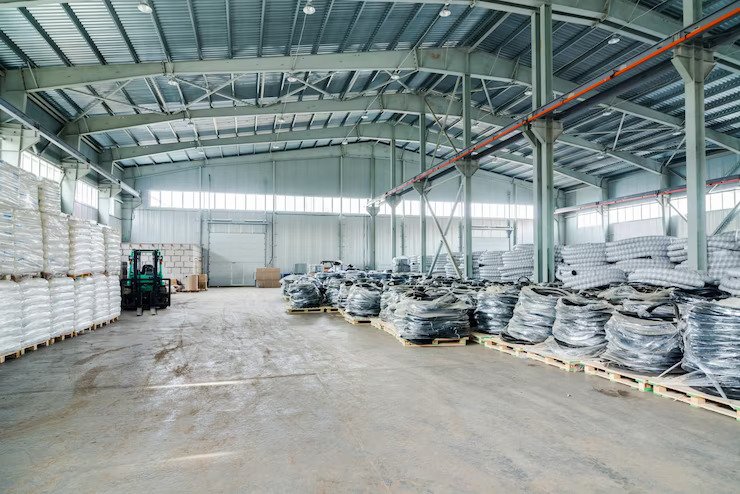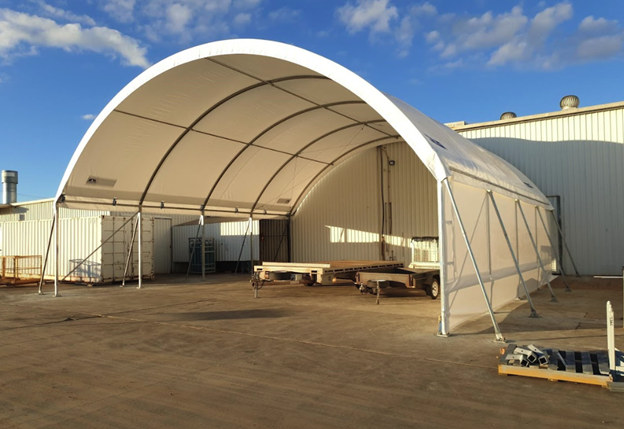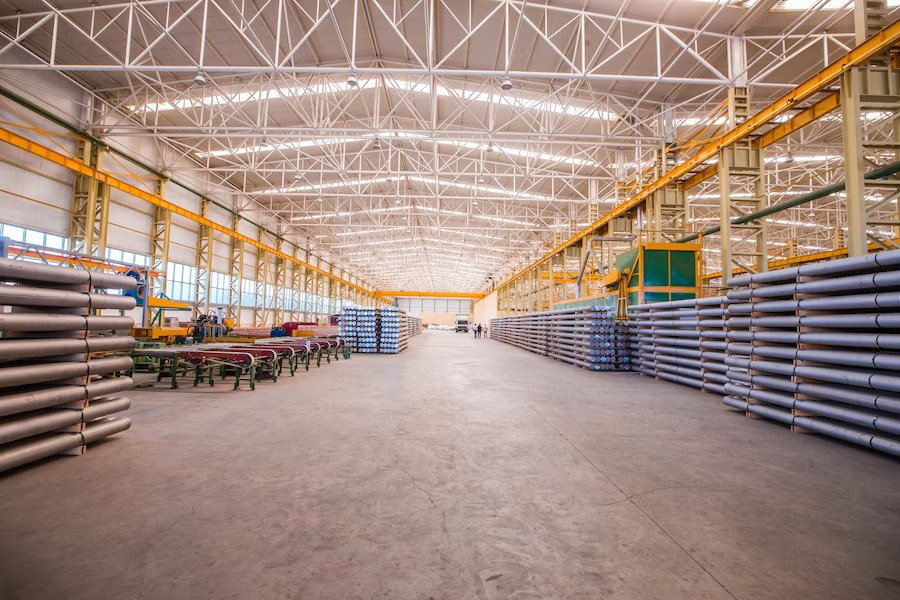How to Enhance Construction Site Safety with Stable Fabric Shelters
In the world of construction, safety is paramount. It is a domain where professionals continually seek innovative ways to protect personnel and equipment. In recent years, the adoption of stable fabric shelters has been an invaluable addition to the toolbox of safety measures. Fabric shelters are robust and versatile structures engineered for strength and durability. They are constructed from a lightweight steel frame covered with high-strength fabric. This design offers the critical balance of portability and resilience needed on dynamic construction sites. The application of Allshelter‘s stable fabric shelters is gaining traction for their invaluable contribution to construction site safety.
Safety is the cornerstone of any successful construction project. From weather fluctuations to hazardous materials, construction sites are beset by various challenges. Thankfully, technological advancements have ushered in a new era of safety measures in the industry. Among these developments, the application of stable construction shelters is increasingly recognized for its substantial contribution to construction site safety.
Understanding Stable Fabric Shelters
Fabric shelters feature a robust, lightweight steel frame cloaked in a high-strength, weather-resistant fabric. For longevity and strength, these shelters offer a unique combination of portability and resilience that makes them perfect for the ever-changing demands of construction sites.
Weather Protection
The most evident benefit of fabric shelters is their ability to protect against inclement weather. Weather unpredictability is challenging for construction projects, from scorching heat waves to torrential rainstorms. Exposure to these elements can cause delays in project timelines and present substantial safety risks to the workforce. Heat can lead to heatstroke, while cold temperatures may result in hypothermia. Rainfall makes surfaces slippery, increasing the likelihood of accidents.
Fabric shelters shield both workers and equipment from these hazards. The tensioned fabric used in their construction is typically UV resistant, water-resistant, and capable of withstanding significant wind loads. By creating a controlled environment, these shelters promote safer working conditions and equipment longevity.
Accident Prevention
Construction sites are rife with potential accidents – slips, trips, falls, and falling object hazards, to name a few. The design of fabric shelters can help mitigate some of these risks. For instance, their robust structure can be a barrier, preventing injuries from falling debris.
Fire Resistance
Fire safety is critical in construction sites, where flammable materials and heat-generating equipment are commonplace. Many fabric shelters are designed with fire-resistant materials, providing an added layer of protection. This fire resistance can help control the spread of flames, buying precious time for evacuation and response in a fire outbreak.
Fabric Shelters as First Aid Stations
In a medical emergency, prompt access to first aid can be the difference between a minor and a severe injury. The versatility of fabric shelters presents an opportunity for their utilization as temporary first aid stations at construction sites. These shelters can be equipped with necessary medical supplies and serve as a centralized location for medical attention. Fabric shelters, with their rapid assembly and disassembly capabilities, can be set up wherever they’re needed most, providing immediate access to first aid across the entire construction site.
The structures’ durability ensures a safe and protected environment for injured workers and medical personnel, regardless of weather conditions. Moreover, the adaptability of fabric shelters, such as Allshelter’s, allows for customization based on specific needs, including insulation for temperature control or soundproofing for patient privacy. In this manner, fabric shelters significantly improve the rapid response capabilities at construction sites, promoting worker safety and well-being.
Site-Specific Safety Features
Fabric shelters excel in their capacity to meet site-specific safety needs. Their customizable design allows for tailored solutions that address distinct challenges unique to each construction site. For instance, in environments where noise pollution is a concern, fabric shelters can be enhanced with sound-absorbing materials to create a quieter workspace, thus reducing the risk of noise-induced hearing loss among workers.
Similarly, fabric shelters can be equipped with air filtration systems for sites exposed to dust or hazardous particles to protect workers’ health. In circumstances where chemical spills are a potential risk, shelters can be outfitted with containment solutions to prevent the spread of harmful substances.
Lastly, fabric shelters can also be adapted to suit extreme climatic conditions, providing reliable protection against severe heat, cold, wind, or snow. Providers like Allshelter ensure their fabric shelters can be designed to meet these site-specific needs, offering flexible safety solutions to construction sites’ diverse challenges.
Final Thoughts
With myriad safety benefits, stable fabric shelters are a transformative investment for construction sites. These shelters significantly enhance construction site safety, from weather protection and accident prevention to fire safety and worker wellbeing. By integrating Allshelter’s fabric shelters into their safety protocol, construction companies can establish a safer, healthier, and more efficient work environment.



















